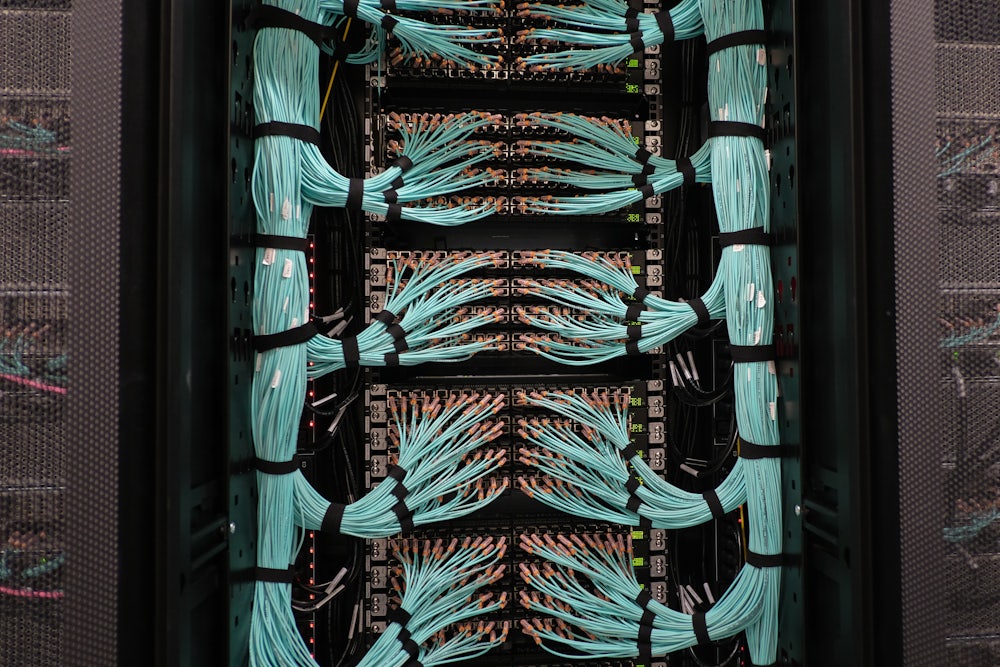In both of my chosen professions—teaching and journalism—most discussion of artificial intelligence errs on the side of navel-gazing. It’s all about us. We worry that our jobs are over: Why should any company hire a writer—or any “creative”—if they can just plug a prompt into ChatGPT? Professors fret that students are using A.I. to write their papers, and asking what that means for the learning process. Should we even assign papers anymore? We who have spent our lives trying to cultivate our minds and those of the young go to art museums, where we are greeted by A.I.-generated installations. We fear that our professional woes reflect a philosophical problem: Is the human mind even necessary anymore?
If that sounds intense, well, it is! These concerns about the cultural effects of A.I. shouldn’t be written off, particularly given the risks of A.I. exacerbating misinformation, democratic dysfunction, and systemic racism. But they sometimes risk obscuring the more direct, physical problems with the technology. A.I. is not only robbing us of our livelihoods and depriving our lives of meaning: It puts our planet and its people under existential threat, for no good reason.
The amount of water that A.I. uses is unconscionable, particularly given that so many of its data centers are in desert regions that can ill afford to squander it. A.I. uses this much water because of the computing power it requires, which necessitates chilled water to cool down equipment—some of which then evaporates in the cooling process, meaning that it cannot be reused. The Financial Times recently reported academic projections showing that A.I. demand may use about half the amount of water consumed by the United Kingdom in a year. Around the world, communities are rightly beginning to resist the construction of new data centers for this reason.
Then there’s A.I.’s energy use, which could double by 2026, according to a January report by the International Energy Association. That’s the equivalent of adding a new heavily industrialized country, like Sweden or Germany, to the planet.
Microsoft’s own environmental reports reveal these immense problems: As the company has built more platforms for generative A.I., its resource consumption has skyrocketed. In 2022, the company’s use of both water and electricity increased by one-third, its largest uptick ever.
A.I. threatens our clean energy transition, not only because of its massive energy use, though that’s one obvious reason, but also because of the carbon-intensive materials it demands, including concrete, aluminum, rare earth—and lithium, which is also needed for electric vehicles.
Those same materials are also toxic, leaving the world with a dangerous mess to clean up when they reach the end of their useful life. Whatever “generative” A.I. generates, one thing it certainly creates is e-waste—already one of the fastest-growing waste streams in the world—as it drives server and chip design innovation, leaving a phenomenal amount of used equipment in its wake. That doesn’t sound as terrible as sapping our energy grid or draining our drinking water supplies, but it’s just as bad: Some 70 percent of the toxic waste in landfills is e-waste. It pollutes food and water and causes air pollution to nearby communities. (The tech enthusiasts at AI Journal think this is a problem that A.I. itself can solve, but I’m skeptical.)
A significant problem noted by journalists and academic researchers alike is that the tech companies are stingy at providing information on the energy and water effects of A.I. This makes the problem hard to study and to solve. Trying to report an article published in The Atlantic last week, Karen Hao found that her requests for information were constantly rejected from Microsoft and its partner companies as “proprietary.” Hao spent months investigating the impact of a single data center in the desert in Arizona—a place where she found it was dangerously hot and dehydrating to walk around even briefly, and where the water supply is perilously limited. But the company would ultimately tell her very little.
This problem is finally getting a small piece of the attention it deserves, thanks to recent coverage by the Financial Times, Nature, and The Atlantic. But the tech industry’s fossil fuel–like tactics of greenwashing, gaslighting, and refusing to comment are going to make thorough reporting on this difficult. The closest we’ve gotten to candor came when Open AI founder Sam Altman admitted at Davos that A.I. will consume much more energy than expected, straining our grids. He admitted that the situation could become untenable: “There’s no way to get there without a breakthrough.”
Researching this issue gives one all the feelings of a dystopian twentieth-century sci-fi movie about parasitical robots stealing our human essence and ultimately killing us off. At every point, we want to yell at the screen, “Don’t let the robots in there!” We wonder: Can’t they be stopped?
If there was an A.I. abolition movement, I’d join it today, ideally advocating exuberantly cruel penalties for the tech moguls who have ensnared us in this destructive and frivolous gambit. But being of a more constructive bent, Green New Deal co-author and Massachusetts Senator Ed Markey last month introduced the Artificial Intelligence Environmental Impacts Act of 2024. It’s unfortunately mild, calling upon government agencies to do what the industry isn’t doing: measure and investigate A.I.’s environmental footprint. It’s perhaps a politically feasible first step, especially given bipartisan social and cultural concerns about A.I.
Part of what’s so galling about A.I. imperiling the physical resources we need to live comfortably on earth and endangering the energy transition is that it’s wholly unnecessary. Many other environmentally harmful industries are understandably hard to change or replace because of the value they provide to human civilization. We obviously need agriculture, or how will we eat? We can and must live without fossil fuels eventually, but doing so is complicated given how much we depend on them in daily life, and how much they have contributed to the world we enjoy. But A.I. provides nothing that we truly need.
A.I. isn’t worth its significant costs. You don’t have to be a Luddite—or an insecure creative like me—to fear this technology and the sinister disregard for the human future it reflects. Communities, governments, and even those working in the tech industry should shut these dangerous and parasitical robots down before it’s too late. And meanwhile, let’s at least pass Senator Markey’s bill.








